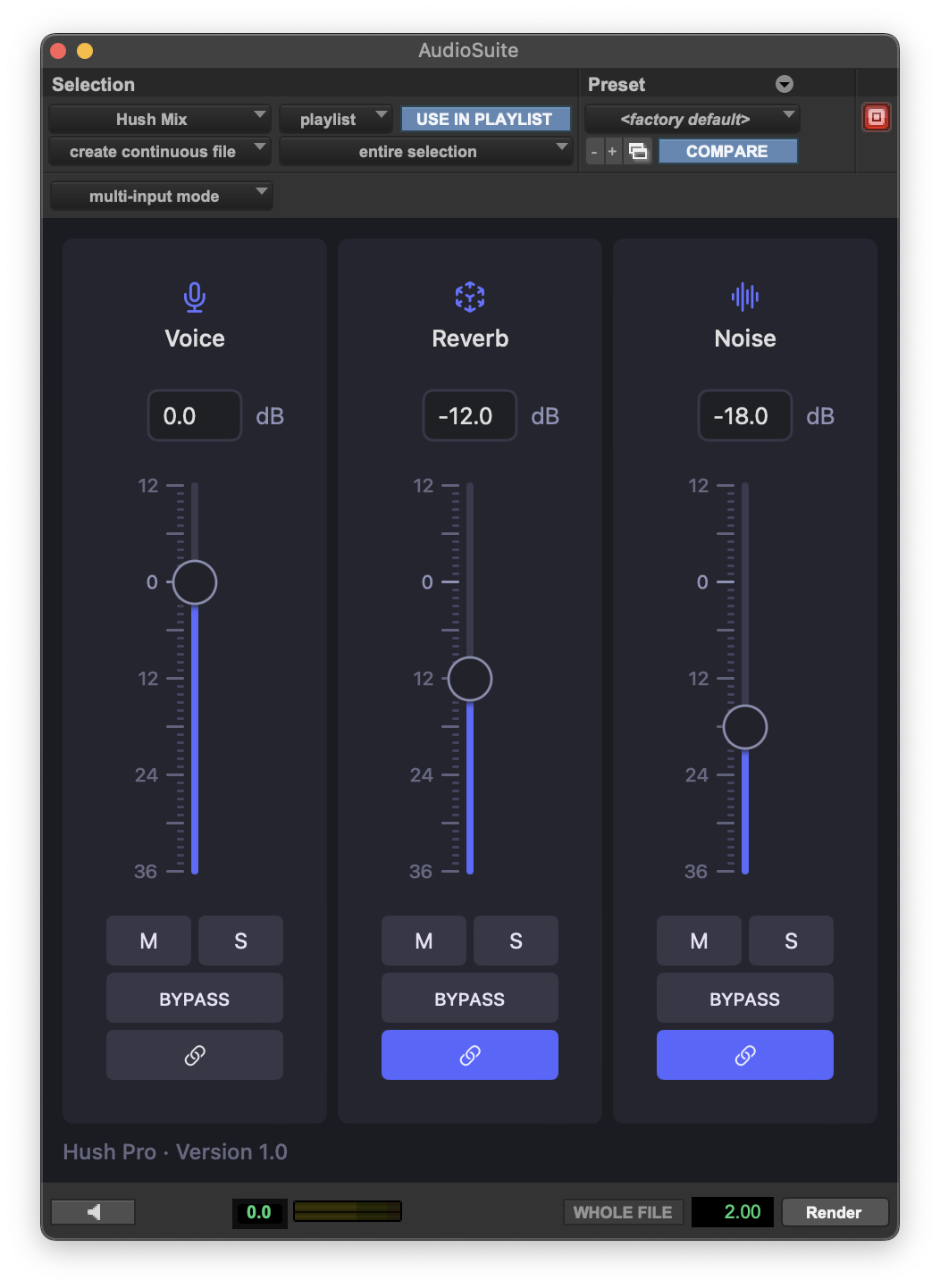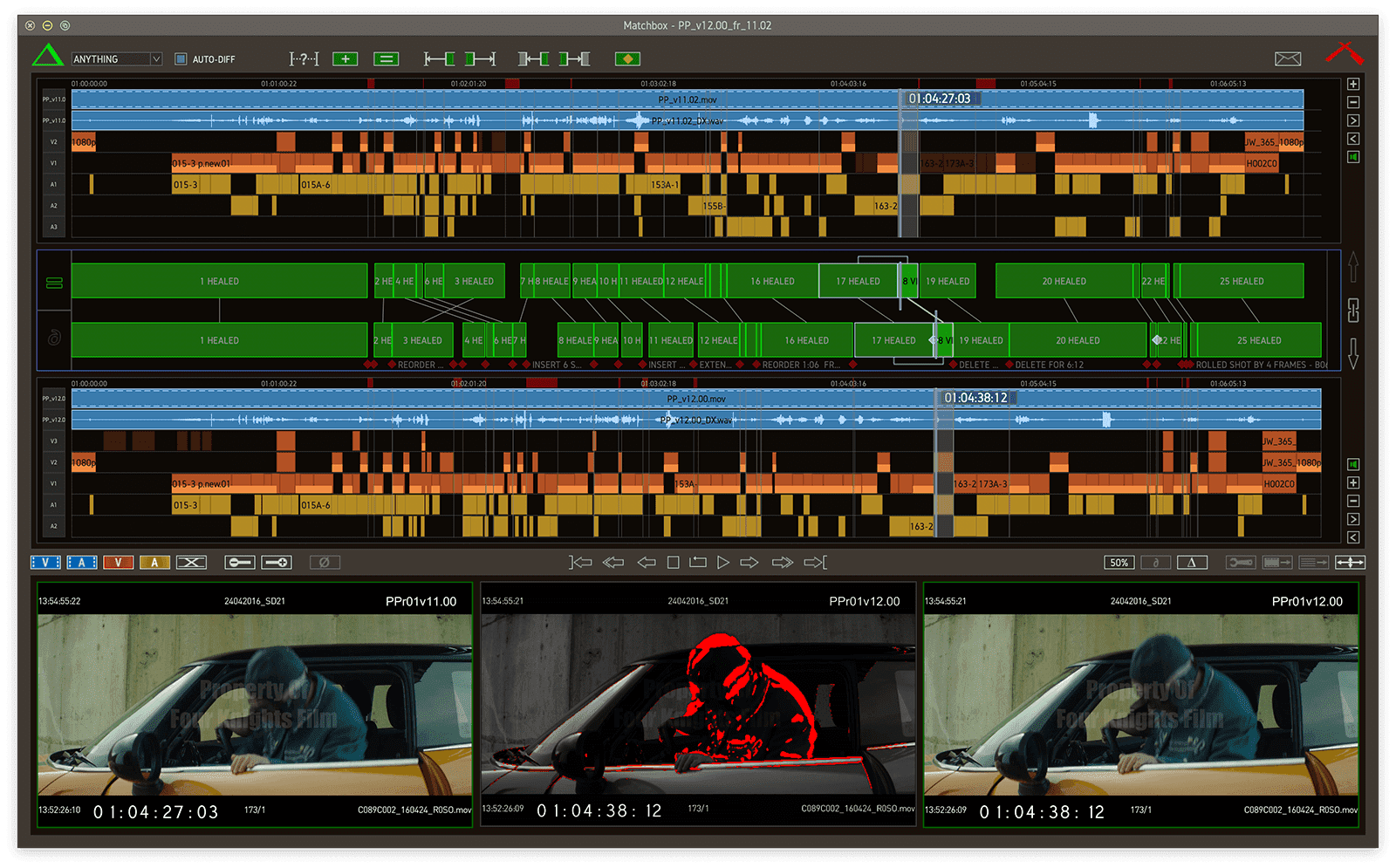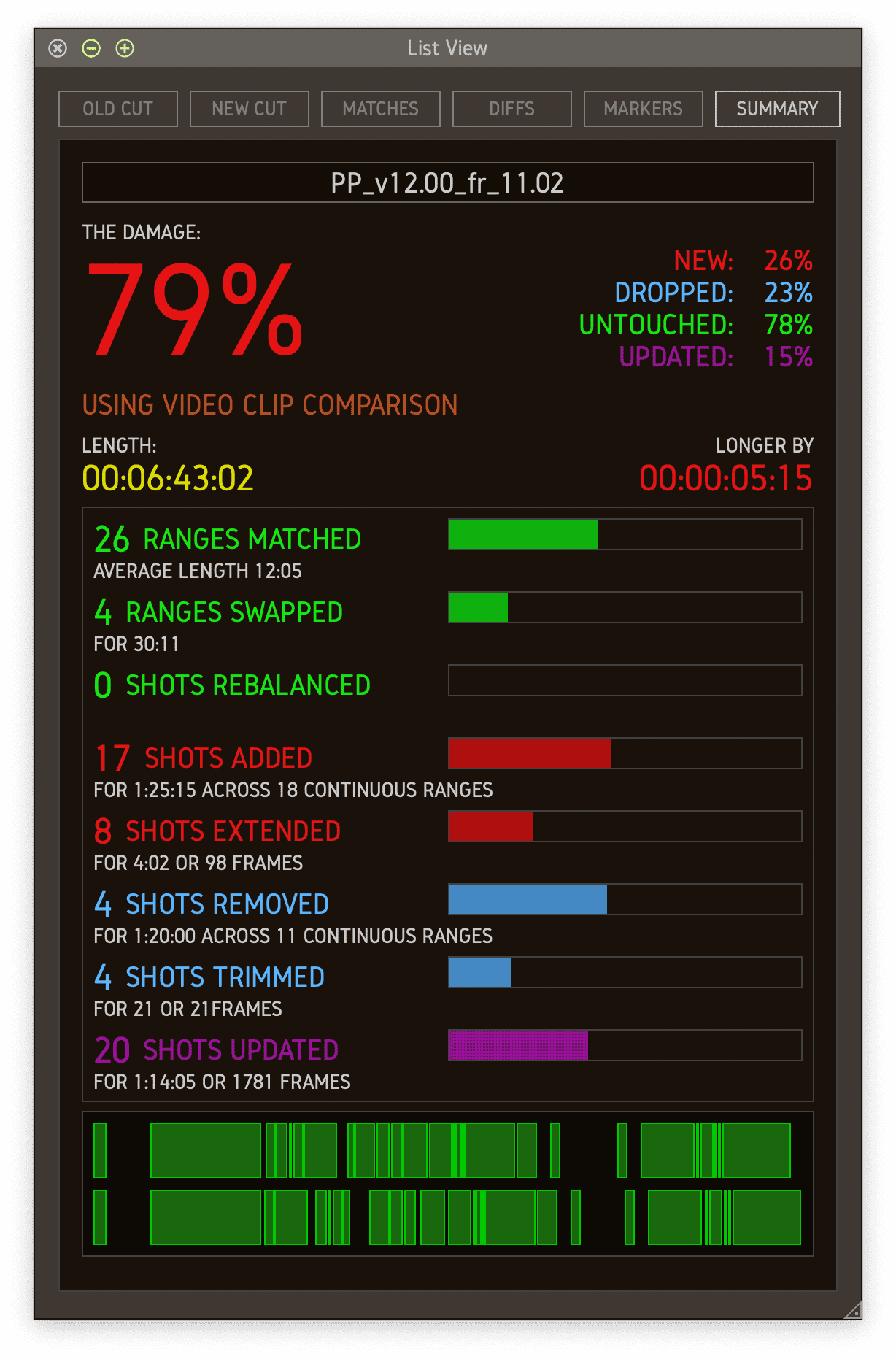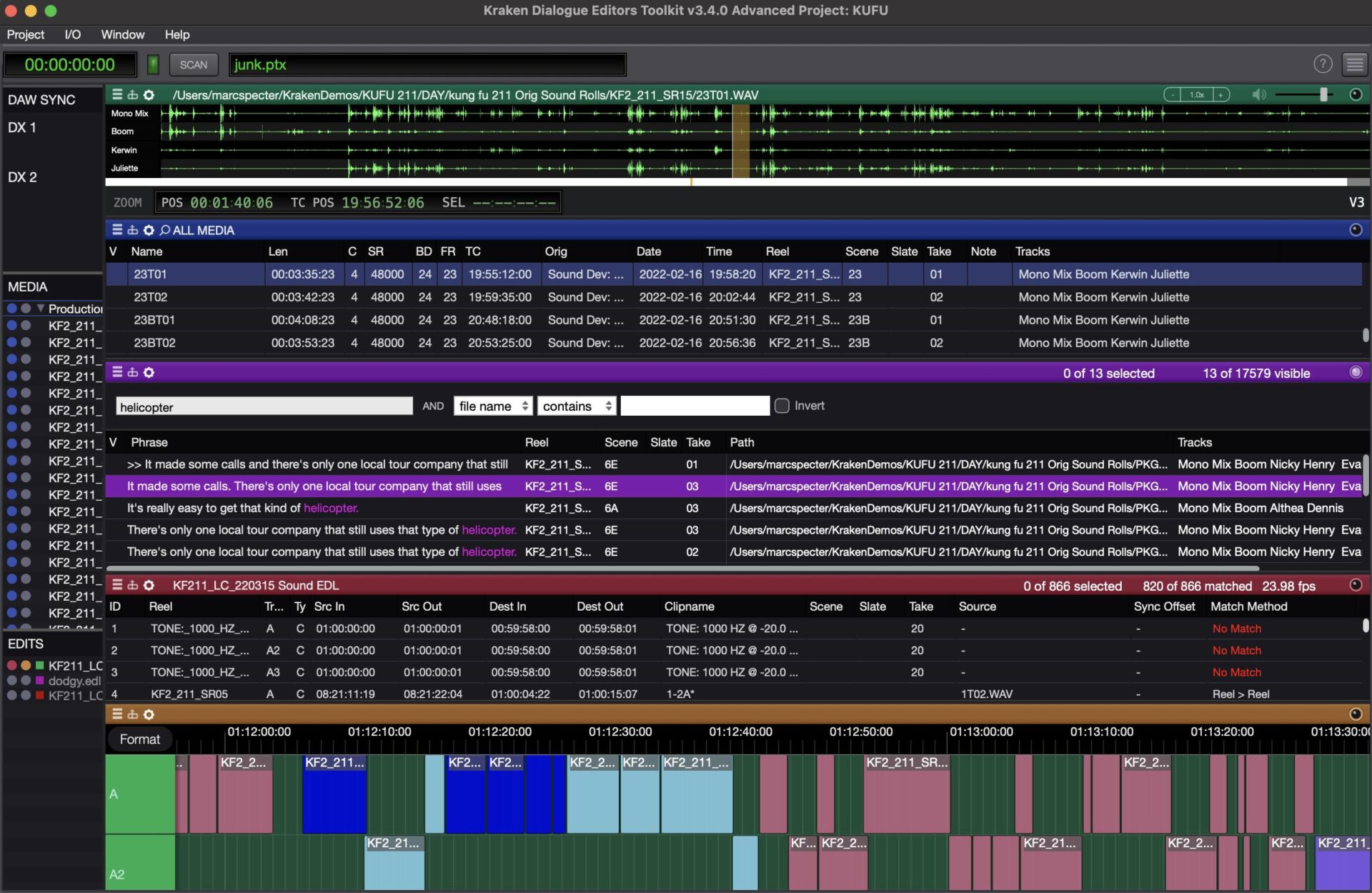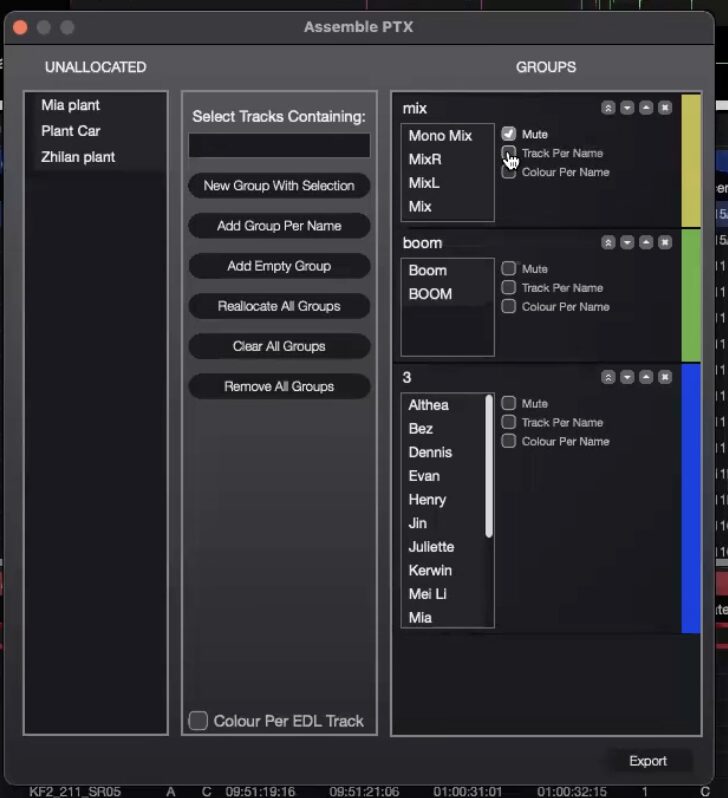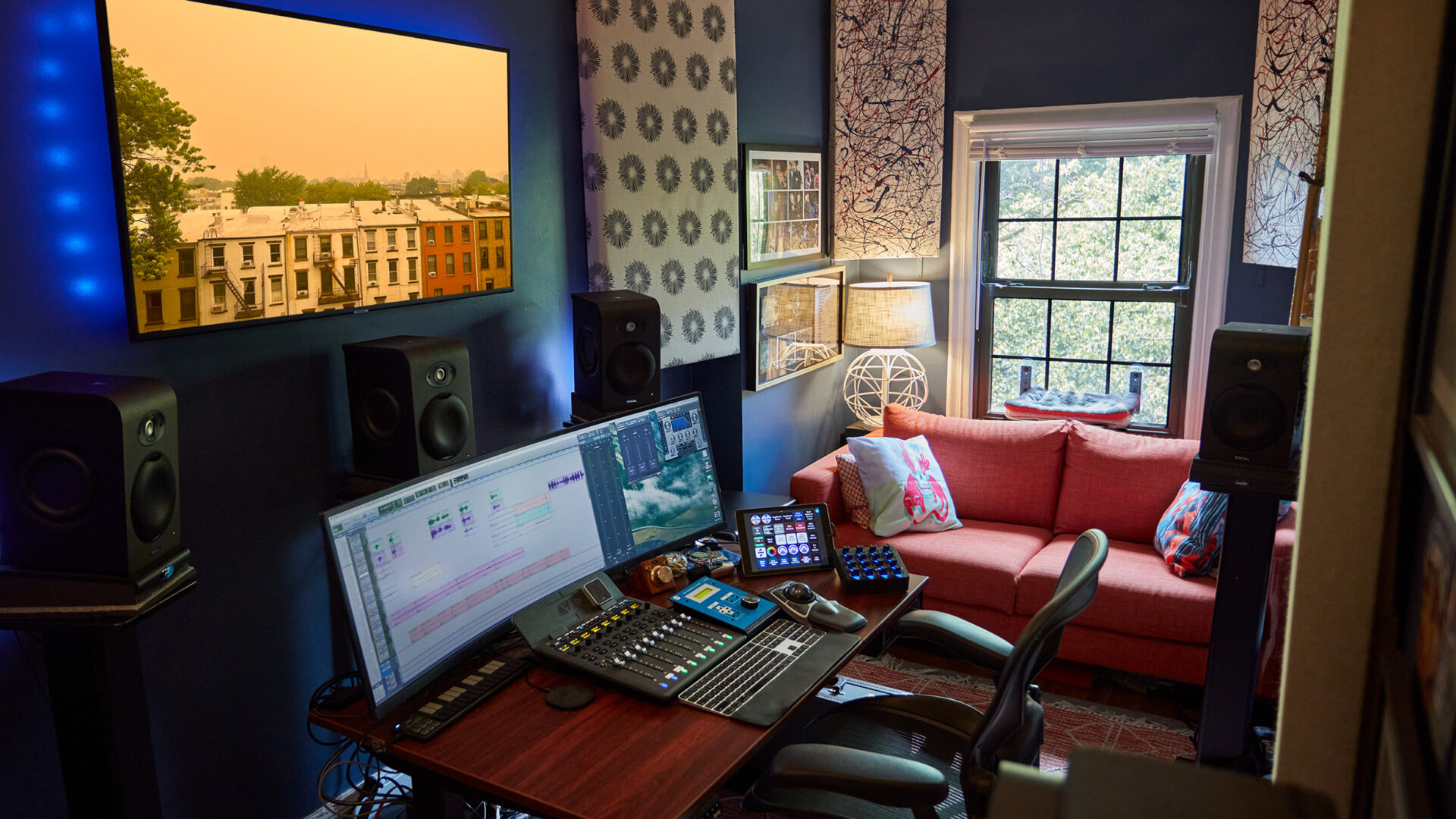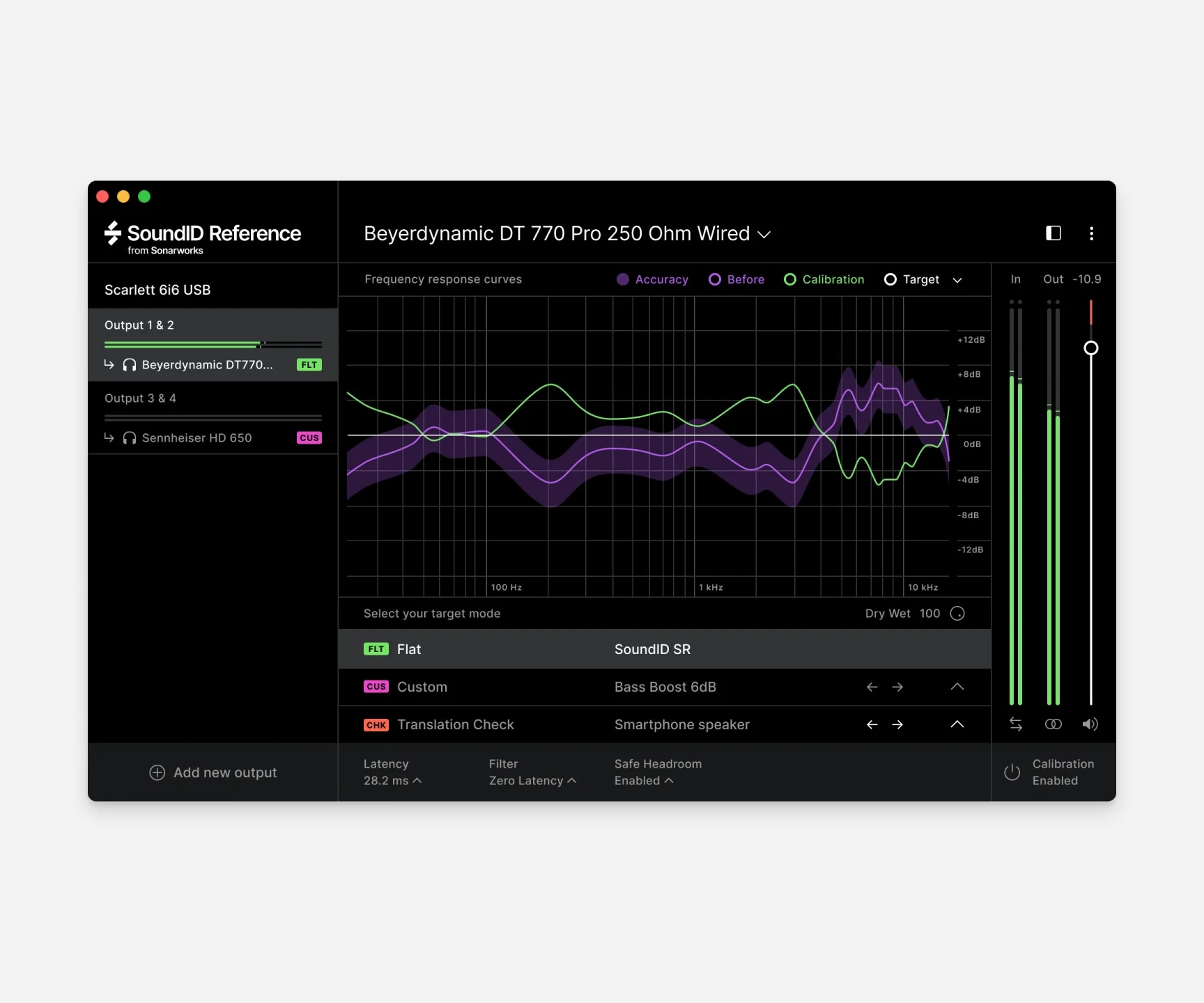My GO TO: Post Production Plugins [2024]
Back in 2018, I wrote about some of the most indispensable plugins for surround mixing.
Of course, technology is constantly evolving. And while most of the products I detailed are still a huge part of my workflow, now is a good time for an update that includes some of the newer tools that have become staples in my studio for audio post-production.
There have also been some key updates to some of the products featured in the 2018 article.
Here are my go to tools post production plugins, 2024 edition:
Hush Pro
Artificial intelligence has taken over so many aspects of our lives in recent years. Hush is one example of AI working for us in the best possible way. Hush is a truly revolutionary noise reduction tool that uses machine learning powered by Apple Silicon processing.
Historically, noise reduction has been an arduous process of finding “clean” noise and removing it from a track. Inevitably, tracks would suffer from some amount of residual artifacting that tends to sound worse the harder you push the noise reduction.
No more.
Hush’s machine learning separates single-source mono dialogue into three different layers: clean voice, reverb, and noise. I’m not exaggerating when I tell you that demoing this plugin produces literal gasps. It just doesn’t compute at first that it should even be possible to mix the noise and the reverb on a mono track independently of the clean voice itself.
Here’s an example I created that features a pretty rough recording I was given of New York City’s Mayor Eric Adams for a podcast. Adams is being recorded in a conference room with an air conditioner blasting in the background. Traditionally, this would have been a “do the best you can” situation with the noise reduction. (Headphones recommended)
As you can hear, Hush cleans up not only the air conditioner without any residual artifacts, but there is actually quite a lot of small room reverb on the track that is disguising the clean voice under all that noise.
Beyond simple noise reduction, the Hush model of element separation has completely changed the way the best sound editors in the world work on dialogue for film.
For instance, rather than using your DAW’s clip gain, or automation to adjust individual lines of dialogue, with Hush you can adjust the clean voice fader up to make a line louder or quieter without ever touching the level of the noise floor.
Or, say you have a shot where an actor is closer to the camera, and then we cut to a wider shot. With Hush, we can push up the reverb fader slightly to match the wider perspective.
Here’s Hush creator Ian Sampson’s demo of Hush Pro in action.
If all this wasn’t good enough, Hush Pro is $249, and you own it for life. No subscription fees, and a DRM-free installer. At the time of this writing, Hush requires an M1, M2, or M3+ apple silicon machine and is currently Pro Tools only. VST and other versions are currently in beta and will be released in the future.
I’ve been lucky enough to be included as one of the beta testers for Hush. Future developments include refining separation for transient sounds, like footsteps and closing doors, alongside ambient noise. Hush has improved the quality of my work in film and podcasting immeasurably. This is a MUST buy.
Matchbox
Matchbox is another incredible tool from The Cargo Cult – makers of Spanner, Slapper, Stemcell, and the brand new Subquake which I recently wrote about.
Matchbox is what The Cargo Cult calls a change management solution. If you’ve ever worked on a film or tv project, you know that the “final” cut can and will change. Re-conforming a dense and complex mix in Pro Tools can be stressful and time consuming.
Matchbox analyzes old and new versions of your project elements (picture, audio, AAF, etc.) and gives you a complete breakdown of what has changed. Taking it one step further, Matchbox can automatically re-cut and re-time your pro tools mix, adding markers along the way at every change point.
Recently, one of my long-time post production clients came to me with a big batch of TV shows I had worked on that all had to be re-mixed with updated music as they had lost the license to the music that had previously been in the shows.
To make matters more complicated, the editor had since re-timed all the breaks between reels thus making it impossible to simply drop a new music stem in.
This is where Matchbox saved me days of my life. I simply loaded in the old and new quicktime cuts, Matchbox analyzed them, and from there, it’s a literal one-click process to sample accurately re-time my old mixes to match new picture. There’s some cleanup involved of course at every cut point, but 98% of the grunt work to save all my old work is done.
Another example of Matchbox in my everyday workflow: I have been doing pre-mixes on live classical music performances that are part of a feature film I’ll be mixing. Since the performances in the film are likely locked—or very close in the current cut—the idea was to get all of the music mixed ahead of time, while the director and editor continue refining the cut of the film.
Once I had those mixes completed, I simply load in the old quicktime cut, and the reference mix, and then load in the new cut and my cue mixes which spot automatically with the embedded timecode.
Matchbox then finds the audio match from the old cut, and the new mixes and moves my multi-track cues in Pro Tools to the exact timecode to match the new picture. This allows me to get a big head start on the mixing work on the film done before they’ve even officially locked picture.
By the way, Matchbox is not just for the audio department. Matchbox will help virtually anyone in post production from Music, to VFX, to the dialogue, and picture editorial departments conform their work to new versions.
With Matchbox, I’m always one step ahead of my clients when changes happen. This tool is invaluable to my post production workflow. It also pays for itself immediately when you add up time saved.
Matchbox retails for $699 and supports Mac OS 10.12+ and Win10+. Matchbox works with Pro Tools (12+), Hiero (v12), Nuendo (V11), and DaVinci Resolve/Fairlight.
Kraken
Kraken is the dialogue editor’s toolkit. Created by dialogue editor Marc Specter, Kraken is a standalone app for assembling and synchronizing dialogue for film and TV from production audio and preparing sessions for editing in Pro Tools.
You simply import your production soundroll, an EDL, or multiple EDLs, tell Kraken to find matches, and in seconds, you are sync’d and ready to prep your Pro Tools session. Of course, it’s not always that simple.
Production audio doesn’t always match perfectly for any number of reasons. This is where Kraken really shines with an impressive set of tools, and even the ability to create custom code to help you find matches by any number of different search criteria.
Kraken also comes in handy throughout the dialogue editing process. One of my absolute favorite features is called Krakenizer which is a speech transcription tool.
Once your rushes are batch transcribed, you can search for individual lines of dialogue and Kraken will return results from every take in your production audio. From there, you can spot a new line, or a stack of alternates into Pro Tools saving hours of time.
I recently used Kraken for the dialogue assembly on an upcoming feature film. The film’s editor used the production sound recordist’s mix tracks which is a blend of all the mics on set combined into a mono track.
This means that once it’s time to turn the elements over to the sound editor, it’s up to me to reassemble all the multitrack mics to match the mix tracks. With Kraken the entire process was so simple, and lightning fast.
I was able to separate mix tracks, booms and lav mics into color coded sections and assemble the entire thing into a Pro tools PTX file. This is really what makes Kraken an incredible application.
As you can see, once you have your production audio sync’d, the Assemble PTX function allows you to group, color code, and even pre-mute your mix, lav, boom, and plant mics.
Because Kraken is an entirely new application with its own set of tools and features, the app certainly has a bit of a learning curve.
Having said that, one of Kraken’s best features is Marc himself who makes himself available to his customers for group sessions, and individual time over Zoom to help his customers get the most out of this amazing product. I recently explained to Marc how I liked to work, and he showed me the best way to utilize Kraken, and even pondered how to implement my workflow into a future update for the product.
Another personal favorite Kraken feature for me is the ability to create scene and picture cut tracks. These tracks display in Pro Tools basically as blank multi-colored clip groups.
This is extremely helpful as it shows the sound editor a precise visual reference of where every cut from the picture department lands in my audio timeline. It makes cutting ambiences a breeze as I no longer need to scrub one frame at a time, and can simply tab to the next cut marker to make my editing and automation changes. I also have a visual reference at a glance for the entire scene. Brilliant.
Kraken is available for Mac and is in beta for PC in Basic and Advanced formats and retails for $525, and $900 respectively. There are also one month rental options. There really is no better tool for serious dialogue editors on the market, and certainly not one that will come with as much personal communication and service. Kraken is a steal, and another tool that will pay for itself almost immediately getting you from assembly to editing as quickly as possible.
Auto Align Post 2
Auto Align Post from Sound Radix is the engineering Emmy award winning plugin that phase, and time aligns multiple microphones together quickly and seamlessly. I detailed Auto Align Post extensively for Sonicscoop in 2018.
Their new version, Auto Align Post 2 brings with it brand new ARA functionality in Pro Tools. I also strongly recommend checking out Pro Tools’ new video showing the range of functionality of
Auto Align Post 2 in ARA mode.
Auto Align Post is probably the the most crucial tool in making production audio sound great. The simple, but powerful process of phase aligning boom and lav microphones together makes everything that was recorded on set instantly sound better.
Of course, noise reduction tools can help take this a step further, but it’s the microphone alignment itself that instantly separates my work, from what comes off the video editor’s desks.
When Directors exclaim “wow it sounds like a movie now!” they’re almost certainly referring to the clarity of the microphones more than anything else, and that is thanks in large part to Auto Align Post.
Auto Align 2, the sister plugin for one-click aligning static microphones, typically for drum kits and other music performances has also been updated.
I’ve been using Auto Align 2 to align the microphones for a string quartet recorded live in several different spaces for a feature film I’m currently working on for director, musician, and comedian Isabel Hagen.
Auto Align 2 has made the process so easy. I no longer even have to set a reference channel, it’s really just a one-click playback and move on process and it sounds spectacular. My strings sound absolutely incredible locked in with Auto Align 2.
Updates for version 2 include a new spectral phase correction tool, an updated intuited algorithm, and most important a much faster process to align your tracks.
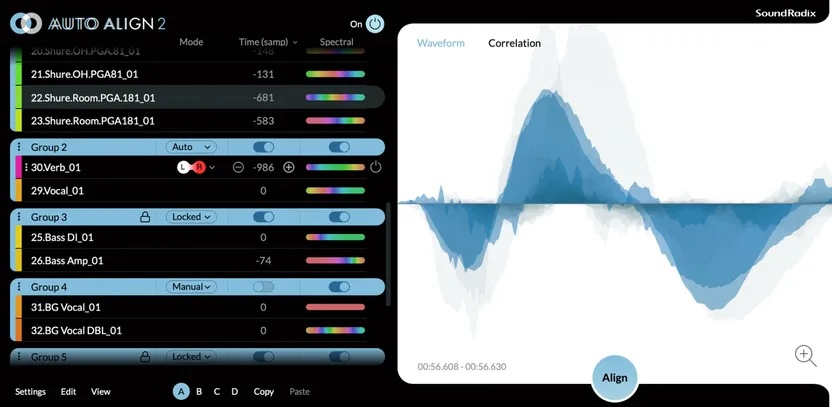
Auto Align 2
Buy it on Sweetwater or B&H.
Auto Align Post 2, and Auto Align 2 work with Apple Silicon as well as Intel, and Windows and run on AAX, VST3, and ARA. Auto Align Post 2 retails for $399, and Auto Align 2 retails for $199. Both of these plugins are an outrageous value for the money and make all the tracks come in to me sounding better before I’ve put a single other plugin on them.
Altiverb 8 XL and Indoor (update)
The makers of the superb Indoor, Altiverb, and Speakerphone have been hard at work updating their products. Altiverb, the original convolution reverb has now been updated to version 8. Altiverb is now surround and atmos ready. This is by far the most feature packed update since the inception of the plugin.
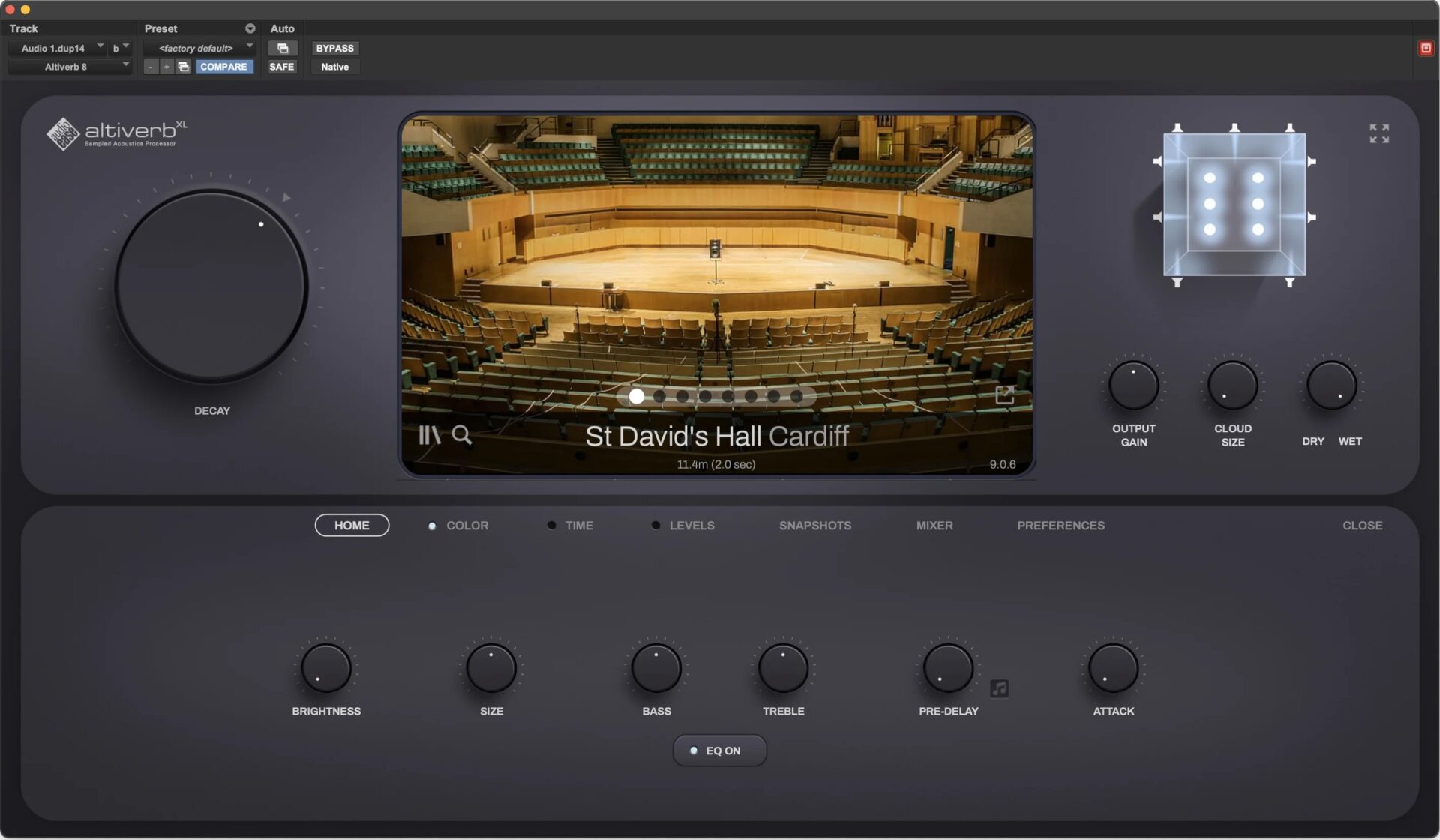
Altiverb 8
Buy it on Sweetwater or B&H
New features include:
- Crucial support for Apple Silicon with Altiverb 8
- A new IR tool that allows you to create your impulse responses up to 9.1.6
- Many new spaces including a camper van, a Tesla, an Atmos plate, industrial spaces, and more
- Improved search and loading speed
- Backwards compatibility with version 7 instances already in your sessions
- Dolby Atmos Support up to 9.1.6.
With Atmos support comes a massive update to Altiverb’s IR library.
It turns out, Audio Ease have been pre-recording Atmos channels for their impulse responses for quite some time.
That extra work has paid off, as Audio Ease details: “Almost all of the hundreds of the music spaces (concert halls, churches, cathedrals, studios, scoring stages) have been upgraded to Dolby Atmos by utilizing the original extra recordings we have been routinely making throughout the years. All outputs of Altiverb are always real and distinct original speaker to microphone takes.”
I’ve had the pleasure of using Altiverb 8 on a number of film mixes over the past few months and it remains as incredible a tool as always. This is a huge leap forward for an already groundbreaking reverb plugin.
Also updated for Apple Silicon and Atmos support is Indoor, the location based convolution plugin for placing sound in spaces.
I wrote extensively about Indoor for SonicScoop and it has become one of my favorite plugins and the only plugin I use in film for putting sounds “in the other room” so to speak. The ability to place a speaker, and a microphone in different virtual spaces, and even open doors makes my clients gasp every time I show them this plugin.
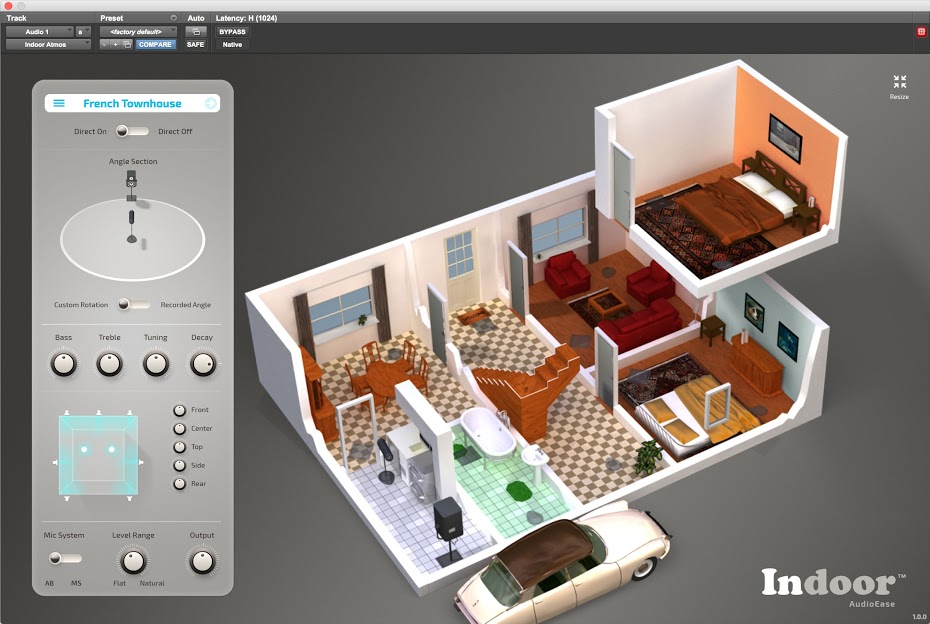
Audio Ease Indoor
Buy it new on Sweetwater or B&H.
SoundID Reference
Whenever I talk to people with home studio setups, I always tell them: don’t buy new speakers, calibrate first.
SoundID Reference from Sonarworks is the tool that makes my speakers, and every plugin I own instantly sound better.
Justin Colletti recently did a deep dive on this product in collaboration with Sonarworks, which is definitely worth checking out. SoundID Reference is room calibration software made easy and WOW did this improve my room.
Once I realized just how good SoundID Reference was at dialing in the adjustments needed to make my speakers sound correct in my room, I was genuinely embarrassed I had waited so long to do it.
I recently switched to new Focal speakers in my mix room in Brooklyn. The room is well treated with padded flooring, and lots of bass traps. But, when I put my new side-ported Focals up, I instantly knew I had a big problem with low, and low-mid range playback.
I used Sonarworks mic and software to calibrate my room which took about 45 min. I make a point of re-calibrating my room whenever anything significant changes with my setup. All my mix templates for post production are setup to route my monitoring through SoundID Reference.
I have found that since monitoring through Sonarworks calibration, my mixes at home in my modestly small surround room translate perfectly to bigger film mixing stages like Harbor here in New York.
I literally cannot work at home without SoundID Reference. Whatever space you’re working in, I promise you, if you are not working with room correction and calibration, you are not hearing what your work the way everyone else is going to hear it.
SoundID Reference is $499 for multichannel, $249 for stereo speakers and headphones, and $99 for headphones alone.
RX 11 / Dialogue Isolate
I have been reviewing RX updates for 11 years now! Which is fitting as RX 11 is the latest update to iZotope’s flagship audio cleanup suite of tools. Among the most exciting updates for RX 11 is ARA compatibility.
RX 11 users running the latest version of Pro Tools can now clean up their audio with RX ARA which means the software is more deeply integrated with Pro Tools itself.
ARA works with a number of third party apps like Melodyne, and Auto Align Post. The workflow, especially on Apple Silicon is lightning fast and means you don’t have to round trip your audio to the standalone app.
Functionality for RX in ARA is a bit limited currently. You can attenuate, replace, de-click, and de-hum, and that’s about it.
Other notable updates in RX include:
Streaming preview: streaming preview allows you to preview what your audio will sound like on different streaming services like Tidal, Spotify, and Apple Music and believe me, they are quite different. Some streaming services have a fairly chopped off top end, while others are more full range for example.
Dialogue Isolate (updated): Dialogue Isolate has received a major update in RX 11. RX’s Dialogue Isolate module is certainly leaps and bounds cleaner and faster than it has been in previous versions of RX. As part of the RX “one-stop shop”, this is an excellent tool for noise reduction.
I will say in all honesty however that in a 1 to 1 comparison with similar noise reduction tools, Dialogue Isolate still sounds fairly artifacted to me, especially when pushed to the extreme. This module isn’t yet achieving that crystal clear quality with noise and reverb reduction that I’ve come to expect and rely on from AI-based machine learning which iZotope states they’re employing. Perhaps I was expecting more of a drastic difference in quality as it is impossible not to notice how similar the updated Dialogue Isolate’s module looks to Hush.
Music Rebalance (updated): the Music Rebalance module has been updated with a new neural net, and higher quality stem separation. Music rebalance has gotten me out of a jam in post production removing background music from production tracks, and it really is incredible when it works.
Music Rebalance is an extraordinary tool when used sparingly. Which is why I’m surprised at iZotope’s insistence on presenting the most extreme examples of Music Rebalance in it’s demos that frankly sound awful. This is not a tool I would ever recommend using in the ways that iZotope is showcasing it. All the same, Music Rebalance remains a module that I have reached for a number of times to solves a very specific problem lighting fast.
Dialogue Match
I wrote about Dialogue match in 2020 and it remains a staple of my post production workflow for matching ADR and other dialogue recorded off set to production audio. Dialogue Match’s ability to match and apply the EQ, reverb and noise profile of a reference track to ADR is incredible and very intuitive.
I often record actors looping lines of dialogue in my studio, and I almost always process them through Dialogue Match before moving on. Hearing obvious ADR in film and TV shows is a huge pet peeve of mine and easily avoided with tools like Dialogue Match.
At $599, the price point for this particular product, as great as it is remains fairly steep, but the tool itself is outrageously good, and gives me the confidence to know that I can quickly and easily match any dialogue tracks together.
Zach McNees has been a sound engineer, editor, and mixer for 22 years.
Since 2011, Zach has primarily worked in audio post-production for film, television, and podcasts. His work spans both documentary and narrative projects as a dialogue editor, re-recording mixer, and score mixer.
Get in touch with Zach at zachmcnees.com
Please note: When you buy products through links on this page, we may earn an affiliate commission.







